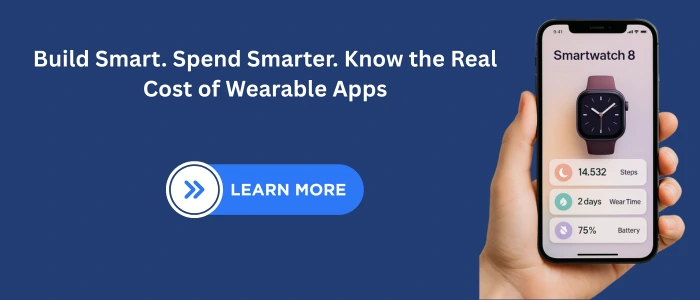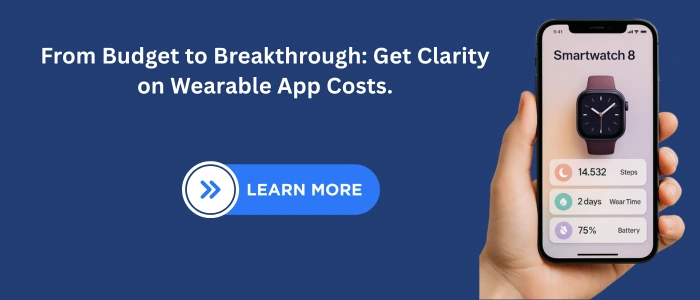Introduction
Wearable technology is growing rapidly. Smartwatches, fitness trackers, and AR glasses are changing how people interact with software. Businesses see value in developing apps for wearables, but a major concern is cost. How much does wearable app development cost? This guide answers that question with clarity.
We will break down the pricing, show you what affects the cost, and help you understand what to expect when budgeting for a wearable app project. Whether you’re planning a fitness tracker or a smartwatch tool, this guide gives you what you need.
Why Build a Wearable App?
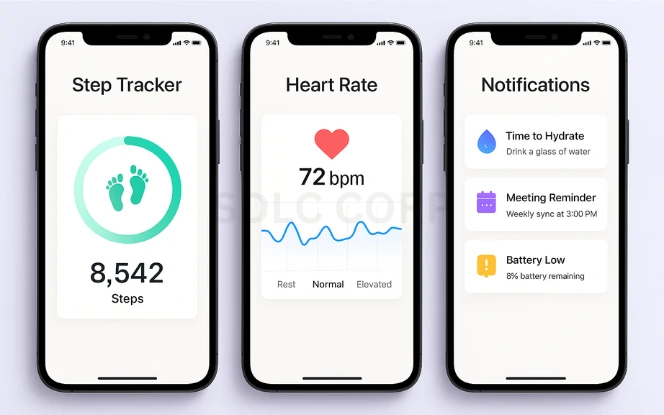
Wearables offer convenience and real-time tracking. Health apps, productivity tools, and navigation software all benefit from wearable platforms. Brands are investing in wearable apps to improve user engagement and data collection. As usage grows, entering the market early can be a strategic advantage.
Types of Wearable Devices
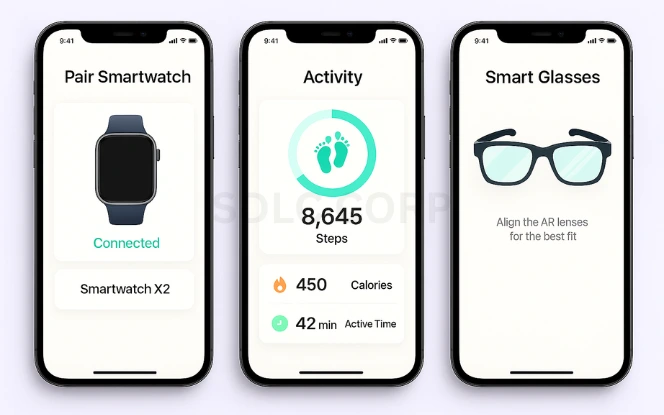
Understanding the type of device helps determine the cost to build wearable app solutions. Common wearable devices include:
- Smartwatches (Apple Watch, Samsung Galaxy Watch)
- Fitness Trackers (Fitbit, Garmin)
- AR/VR Wearables (Meta Quest, Microsoft HoloLens)
- Smart Glasses (Google Glass)
- Medical Wearables (ECG monitors, glucose sensors)
Different devices have different development requirements. For instance, smartwatch app development cost is often lower than AR-based apps due to simpler features.
Related:Which Ten Android App Development Trends Are the Most Popular?
Key Features That Affect Cost
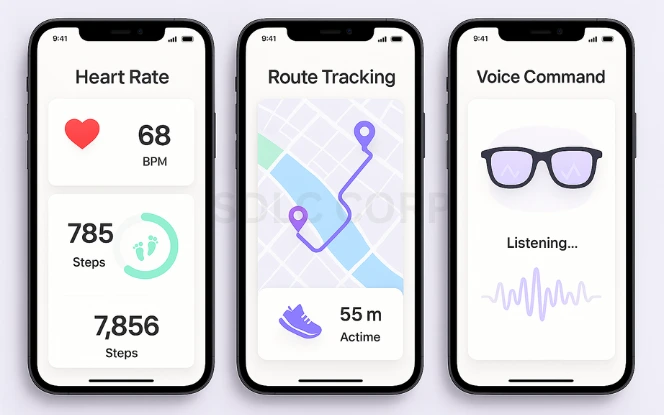
Wearable apps vary widely in functionality. Some provide step tracking, while others need continuous health data analysis. Here are core features that affect wearable app development cost:
- Real-time Notifications
- Health Data Integration (Heart Rate, Steps, Sleep)
- GPS and Location Tracking
- Voice Commands
- Offline Functionality
- Third-Party Integration
- Security and Compliance (HIPAA, GDPR)
The more complex the features, the higher the cost.
Also read:Cost to Build a Fitness App Like Strava
Wearable App Development Pricing Factors
To understand the overall cost, you must know the wearable app development pricing factors. These include:
1. Platform Choice
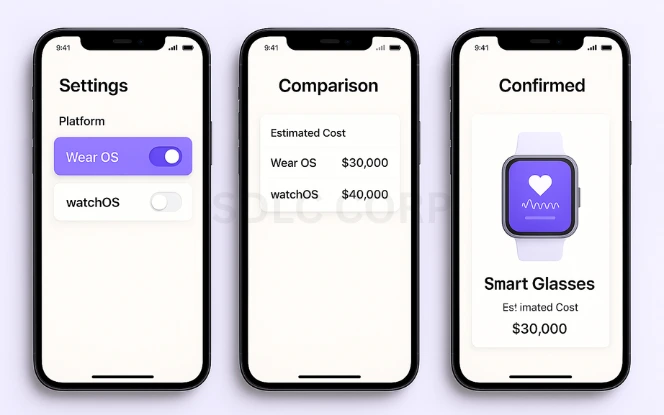
Developing for Android Wear OS vs. Apple watchOS affects cost. Native development for both platforms increases the budget.
2. Design Complexity
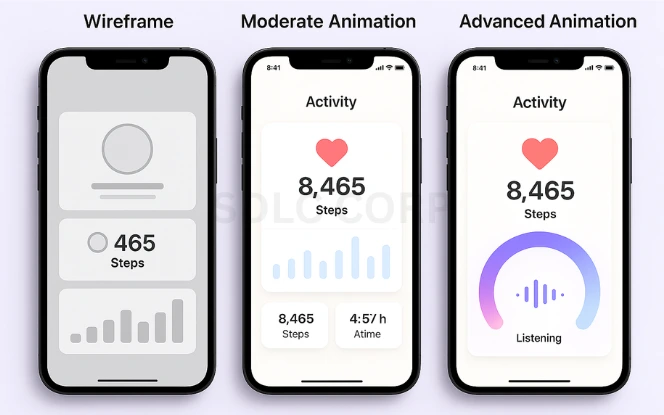
Simple UI with limited interaction is cheaper. Apps with animations, advanced UX, or custom gestures require more work.
3. Device Compatibility
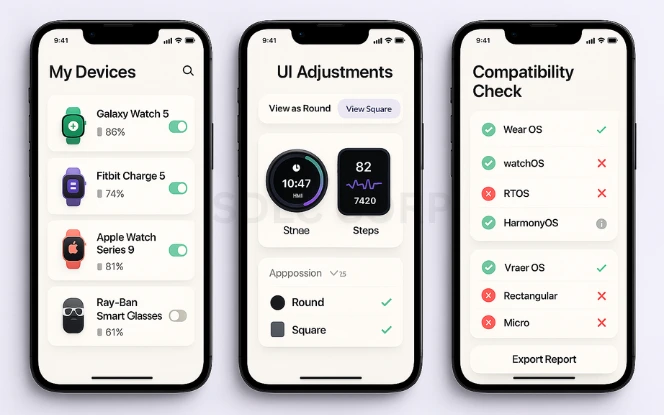
Building an app for multiple devices raises costs due to testing and performance optimization needs.
4. Backend Infrastructure
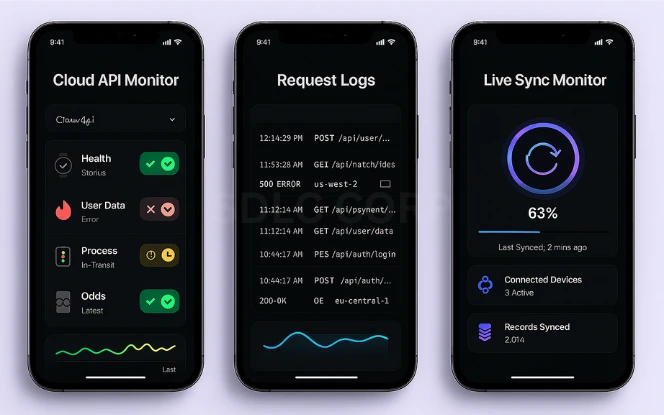
Apps that sync with servers need APIs, cloud storage, and databases. Backend development adds to the budget.
5. Security Measures
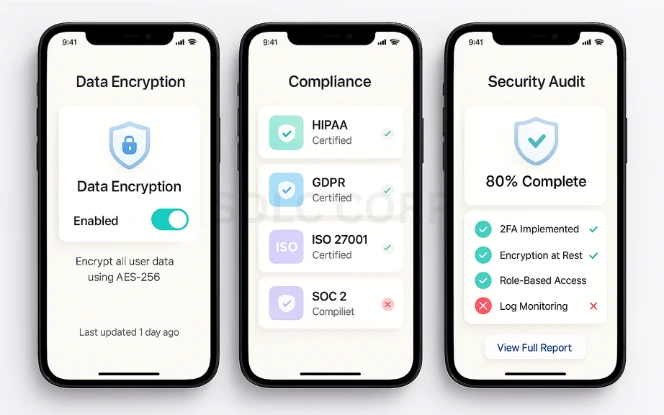
Encrypting health data and complying with legal regulations increase development time and cost.
6. Developer Location
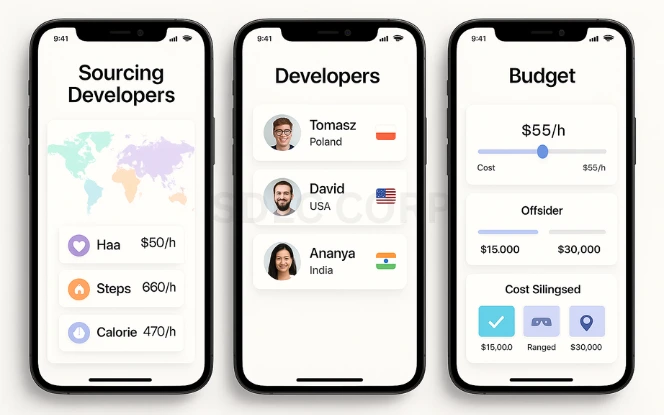
Rates vary by region. Developers in North America or Western Europe charge more than teams in Eastern Europe or South Asia.
Understand better: Understanding the Budget for Mobile App Development by App Type
Wearable App Cost Estimation by Complexity
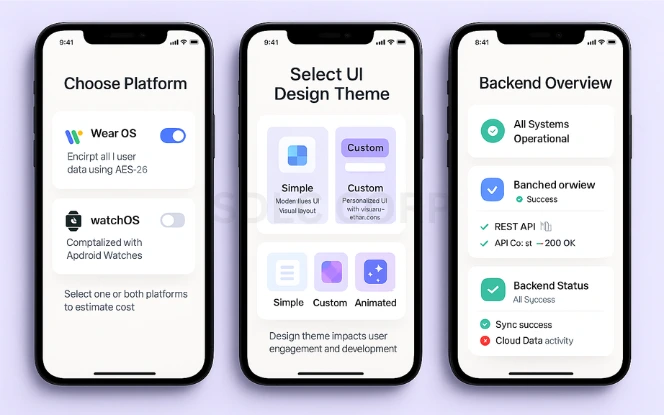
Here’s a general wearable app cost estimation based on project complexity:
Basic Wearable App
Simple notifications, step counting
No server connection
Basic UI
Cost: $10,000 – $20,000
Mid-Level Wearable App
Real-time health tracking, GPS
Backend server integration
Sync with mobile apps
Cost: $25,000 – $50,000
Advanced Wearable App
AI-powered insights, voice command
AR/VR capabilities
Compliance requirements
Complex cloud infrastructure
Cost: $60,000 – $150,000+
These are estimated costs and vary based on scope and feature set.
Smartwatch App Development Cost Breakdown
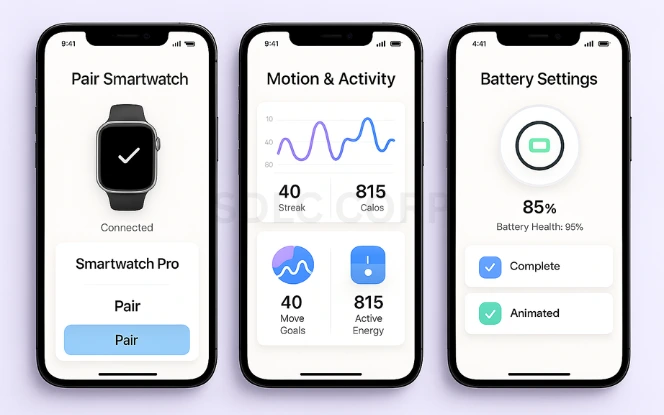
Smartwatches are the most common wearables. Smartwatch app development cost depends on the following:
- watchOS vs. Wear OS: Developing for both adds cost.
- Sensor Integration: Heart rate, motion, GPS sensors need calibration.
- Syncing with Mobile: Most smartwatch apps are companion apps. Mobile app development is an added task.
- Battery Optimization: Efficient apps reduce power drain, requiring performance tuning.
A basic smartwatch app may cost around $15,000, while a feature-rich one could go beyond $70,000.
Timeline for Development
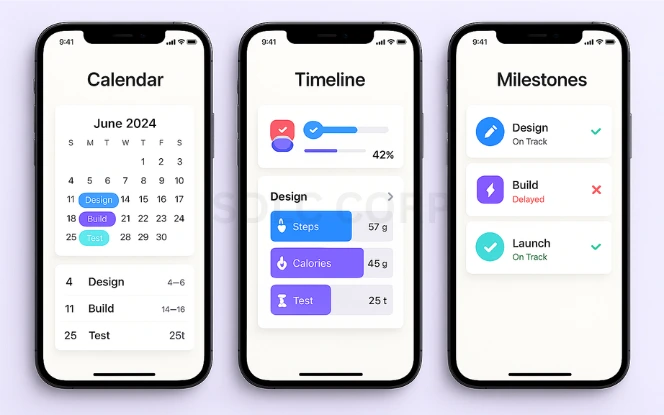
The time to develop a wearable app ranges from 1 to 6 months, depending on the following:
- Feature set
- Team size
- Experience with wearable platforms
Typical timelines:
- Basic App: 4–6 weeks
- Medium App: 2–3 months
- Advanced App: 4–6 months
Hidden Costs to Consider
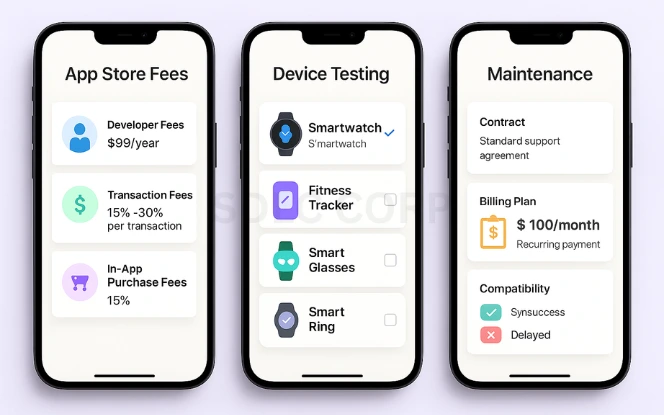
Development is only one part of the budget. Consider these additional costs:
- App Store Fees
- Device Testing
- Post-launch Maintenance
- Security Audits
- Marketing and Promotion
Many underestimate these items during planning. A full budget should account for them.
Wearable App vs Mobile App: Cost Comparison
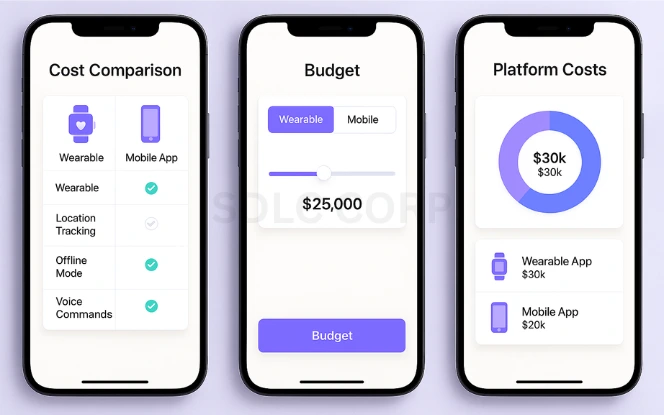
Wearable apps can be cheaper than mobile apps due to smaller screen size and limited features.However, syncing with a mobile app or backend server can offset the savings. Compliance and health data handling also increase cost.
Mobile apps may range from $30,000 to $300,000. In contrast, wearable apps range from $10,000 to $150,000, depending on complexity and device.
Best Practices to Reduce Costs
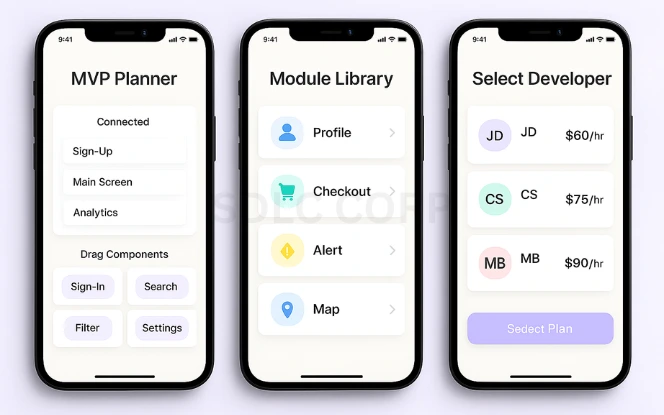
You can manage costs without compromising quality:
- Start Small: Begin with an MVP (Minimum Viable Product)
- Choose One Platform: Target watchOS or Wear OS, not both
- Use Pre-built Components: Open-source tools or SDKs can save time
- Outsource to Specialized Teams: Offshore developers can reduce expenses
Conclusion
So, how much does wearable app development cost? It varies. A basic app might cost $10,000. A full-featured, enterprise-grade solution could be $150,000 or more. The key is understanding what you need and working with a team that fits your budget and goals.
Take time to define features, choose your platform, and budget for maintenance. With the right planning, wearable app development can be efficient and cost-effective.
If you’re ready to start your project, begin with a clear scope and realistic expectations. Cost clarity helps avoid surprises later.
Contact us at SDLC Corp to discuss your wearable app development needs.
FAQs
What Is The Average Cost To Build A Wearable App?
The average cost to build a wearable app ranges from $10,000 to $150,000. The final amount depends on app complexity, features, platform, and developer location.
Which Factors Influence Wearable App Development Pricing?
Key factors include platform choice, design complexity, backend infrastructure, device compatibility, compliance requirements, and the geographic location of the development team.
How Long Does It Take To Develop A Wearable App?
Basic apps can take 4–6 weeks, while more complex ones may take 2–6 months. The timeline depends on features, scope, and development resources.
Is Smartwatch App Development Cheaper Than Mobile App Development?
Yes, in most cases. Smartwatch apps usually cost less due to their limited scope and interface. However, syncing with mobile or server infrastructure can raise costs.
Can I Reduce The Cost Of Developing A Wearable App?
Yes. Strategies include launching an MVP, targeting one platform, using reusable components, and outsourcing to experienced offshore development teams.

